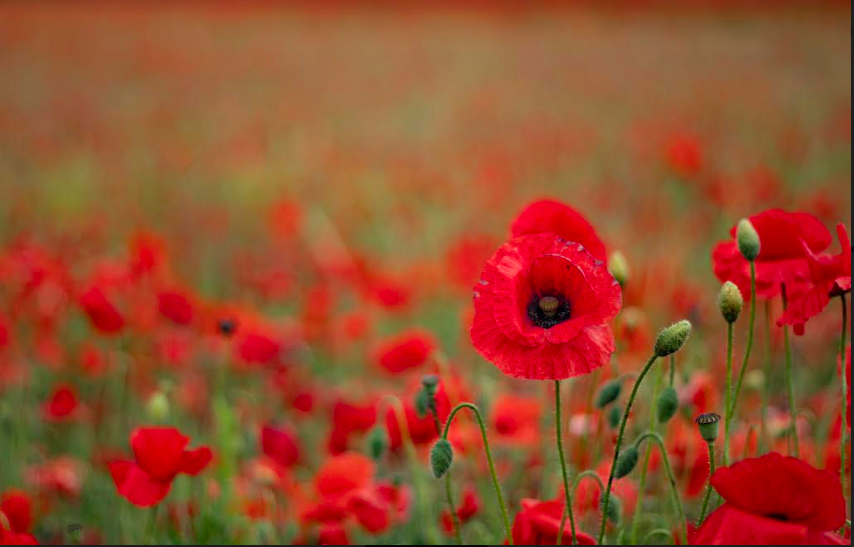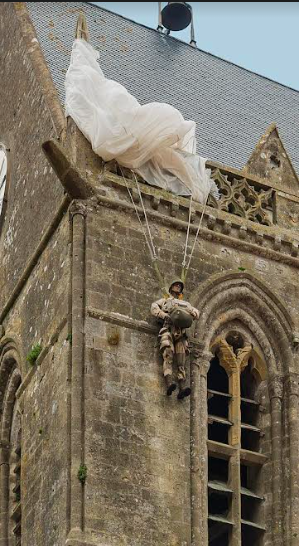Journey to battle-scarred Normandy: Purposeful travel
There’s a lot to see and do on the coast of Normandy. There’s the medieval port of Honfleur, where tall half-timbered houses watch over modern yachts, and tourists savour their moules frites with a glass of local apple cider in the sunshine. A little further north are the white chalk cliffs and natural arches of Etretat, with its pointy rock formation l’Aiguille, the Needle, which featured in the adventures of gentleman thief Arsene Lupin.

But Normandy has a violent history, having been the site of invasions and battles since the beginning of time.
More recently, for three months in 1944, it was the scene of carnage during the Battle of Normandy, where hundreds of thousands of soldiers lost their lives.
The battle-scarred beaches of Normandy are a well-known destination for tourists and those paying respect to their fallen soldiers. But did you know that at least 20,000 French civilians were killed in the fighting, and countless others were forced to flee their homes and take refuge from the barrage of bombs? Hidden amidst the large museums and well-trodden battle sites are smaller memorials to the people of France who fought and died for their own country.
The Battle of Normandy—’Operation Overlord’

The Allied invasion of Normandy on 6 June 1944 was history’s largest amphibious operation. Thousands of Allied landing craft disgorged over one million soldiers onto the beaches of Normandy over the space of one month; nothing of this scale had ever been attempted before. But the invasion of the beaches was merely the first stage. For several months, the Allied soldiers fought their way through tiny villages and the difficult bocage country of high hedgerows and sunken lanes, drenched from one of the wettest summers on record, to reach the major towns. By the end of August, the Allies were successful – they had forced their way through the tenacious German resistance and had retaken Normandy.
Casualties, although high, were less than feared.
Allied losses in the several months preceding the invasion to August 29, 1944, totalled some 237,606 killed, wounded, or missing. German casualties are largely guesswork, but the number killed, wounded, or taken prisoner range from some 288,875 to 400,000.
But the effect on Normandy was devastating.
Heavy bombing obliterated villages and destroyed towns. Ancient houses and buildings, medieval churches, and cathedrals were gone in an instant. Of the 20,000 French civilians who died (some estimates put the number up to 70,000), most were killed during the Allied bombing campaign.
Battle-scarred Normandy beaches
Along the weathered coast of Normandy, the main WWII pilgrimage sites are Sword, Omaha, Gold, and Juno Beaches, the large museums like the D-Day Landing Museum at Utah Beach, and the pitted landscape and bunkers at the Pointe du Hoc.
But the smaller sites can be just as moving and allow us to experience the war, first-hand.
Falaise Memorial — Civilians at War
The town of Falaise, birthplace of William the Conqueror, and its surrounding area was still held by the Germans six weeks after the beach landings. Known as the Falaise Pocket, it was the last German stronghold in Normandy. When the area was finally under Allied control it was only a short journey to the liberation of Paris, and the eventual defeat of the Germans in France. But a heavy bombing campaign saw most of the hamlets and villages in the area flattened, and much of the local population dead or homeless.
In 2016, with cooperation between various communes in the Calvados department (region of Normandy), a Memorial museum called La Mémorial de Falaise, dedicated to the lives of civilians during the Battle of Normandy was established. This poignant museum explores the fear and terror of the Normans under the fierce Allied bombardment, the complicated relationship between liberators and the liberated, and the long rebuilding program following the war.
Musée 44 La Percée du Bocage
The town of Villers-Bocage was small but in a strategic location.
Unfortunately for the British soldiers in their tanks who arrived there on 13 June, a number of German tanks had already perceived its importance and there was very soon a fierce battle for the town. Caught in the crossfire, at least nine French civilians were killed. The British retreated and the Germans re-occupied the town, setting fire to a number of buildings and possibly killing three more French in the process. Not to be defeated for long, the Allies began a bombing campaign in the town, and Villers-Bocage was liberated on 4 August, at the cost of many more French lives.
The small museum Musée 44 La Percée du Bocage tells the story of the British breakthrough through images, a light and sound presentation, and documents and items given to the museum by Allied soldiers who were fighting there in 1944.
Forges-Les-Eaux — Normandy Resistance museum

Life in the French Resistance was nothing like the British comedy series ‘Allo Allo’. Resistance fighters put their lives at risk every day, whether it was sabotaging railway lines, evacuating Allied soldiers, or spreading propaganda and disinformation.
The French Resistance was integral to the success of operations during the Battle of Normandy. Initially providing valuable intelligence as to the terrain and infrastructure, and the equipment, movements, and morale of the Germans. Their local knowledge was incomparable during the D-Day invasion itself.
On 5-6 June, Resistance fighters committed over 1000 acts of sabotage, such as the destruction of high power voltage lines to disrupt the power supply to the coast, and the cutting of long-distance communication lines. Unfortunately for the 87 Resistance fighters who were being held in a prison in Caen, on 6 June, under the orders of the Gestapo, they were taken in groups and shot by German soldiers.
A visit to the Normandy Resistance Museum, in Forges-les-Eaux, is sobering, but nonetheless, it is so important to take the time to remember the brave French who chose to resist rather than submit to the German occupation.
Sainte-Mère-Église

The night before the D-Day invasion, 5 June 1944, a stray bomb had set fire to a large house in the small village of Sainte-Mère-Église. All the villagers had banded together in the main square, under the watchful eye of the German occupiers, to put out the inferno. Unluckily, a number of American paratroopers were mistakenly dropped into the village at the same time, where they were easy prey for the German soldiers in a night sky illuminated by flames.
Most were killed either by gunfire or by falling into the fire, but a fortuitous landing by paratrooper John Steele onto the church saved his life. His parachute caught on the church spire, he hung there pretending to be dead for several hours, until he was eventually captured by the Germans. Steele luckily managed to escape within four hours and re-join his fellow soldiers. Sainte-Mère-Église became the first village in Normandy to be liberated.
A memorial to Steele’s escape, recreating his parachute landing on the roof of the church in Sainte-Mère-Église, can be seen today. There is also an Airborne Museum in the village.
The Little Chapel of Saint Michel
Sitting prettily on a rocky outcrop, with stunning views over the water and even as far as Mont-St-Michel (link to my previous article on Mont St Michel) on a clear day, it’s difficult to imagine that the Petite Chapelle Saint Michel saw fearsome fighting over 5 days during a German counter-offensive. 700 American soldiers had the terrifying job of defending the rock, known as Hill 314, whilst short on ammunition and food as the Germans rained them with gunfire. Four hundred of the soldiers were killed, but they managed to stop the enemies from taking the hill, and the German advance was halted.
The Little Chapel of Saint Michel can be found in the town of Mortain-Bocage.
Purposeful travel
A journey to the WWII sites of Normandy can be a pilgrimage, a journey with a purpose.
A bowed head at the grave of a fallen soldier, a red poppy placed on one of a thousand white crosses, a moment of silence to honour a resistance fighter.
Or a sense of wonderment and relief at a village entirely rebuilt from wartime rubble.
The horrors of the Battle of Normandy are long gone, most of the people who lived through it have passed, but this makes our journey even more special – we will remember them.
You can read more ‘Purposeful Travel articles’ here.
How have you made your travel more purposeful? Have you ever visited battle-scarred Normandy? Share your comments with us below.
Sources:
1. Ray Johnstone article D-Day Tiger to Trump
2. Official Normandy Tourism – Battle of Normandy
3. France 24 article about French Resistance fighters: The forgotten battles beyond the beaches of Normandy
Image Credits:
1. Poppies via Unsplash
2. Battle of Normandy – ‘Operation Overlord’ via wikipedia
3. A British soldier helps an old woman in ruined Caen via wiki commons
4. John Steele monument on Saint-Mere Eglise via wiki commons






